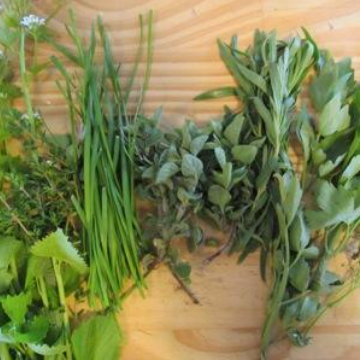Herbs are a garden cook’s (not-so) secret weapon. Sure, home-grown sun-ripened tomatoes are amazing… but tomatoes plus basil make a lasting summer memory. When you think fondly of roasted potatoes, are they topped with rosemary? Is there sage and thyme in your favorite winter root veggie stew?
Herb or Spice? Herbs have no botanical classification. The term simply describes any herbaceous plant whose green parts are used to flavor food, make medicine, or perfume. A spice serves similar purposes, but comes from other parts of plants, like seeds, berries, bark, fruit, or roots. Some plants, like cilantro, give us both. Perhaps to make up for the fact that a part of the world’s population thinks cilantro leaves taste like soap, this herb loves to bolt quickly and make seeds, which are known as coriander, a beloved spice in a myriad of recipes.
Once or Ones? Some herbs have a one-year life cycle, while others come back season after season. Annuals, planted in spring, produce prolifically and die as the autumn cold sets in. Perennials follow the same path until fall, but instead of disappearing forever, hibernate for the cold months and pop back up in the spring with new vigor. Take a look at Erin’s post – Perennial Pesto– to read about the one-of-a-kind excitement of harvesting spring’s first greens.
Herbs have carved out their place in a garden as powerful, multi-use plants that grow well anywhere from fire-escape containers to sprawling farm fields. They produce a continual harvest through most of the growing season and even deter some unwanted pests. Annuals are like house renters: aware of their finite stay, they take up a controlled amount of space in the garden: often growing up and out from one central bush. Perennials, like home owners, make themselves comfortable, spreading out in all directions and rooting themselves to their land more and more each year.
|
The Annuals |
The Perennials |
* The Oddball: Parsley is actually a biennial; it has a two-year life cycle. In its first year, the plant grows into a bushy rosette of delicious parsley leaves, hibernates for the winter, and the next spring, grows a tall stem, which flowers and then turns to seed. If you are just growing it for your table, treat it as an annual. If it’s for eating and saving seeds(we hope so!), leave a few plants to overwinter. You will see parsley’s whole life: from seed to plant to flower and back to seed again.
What herbs are you inviting into your garden this year?







